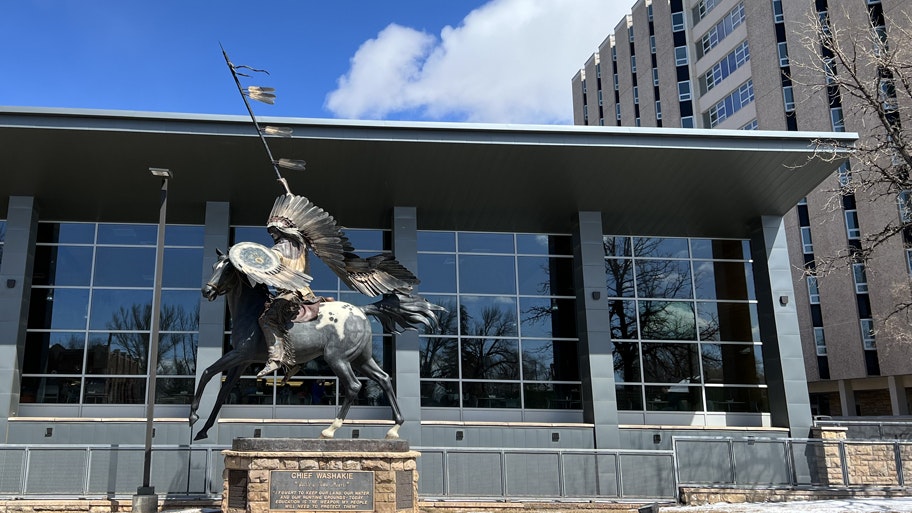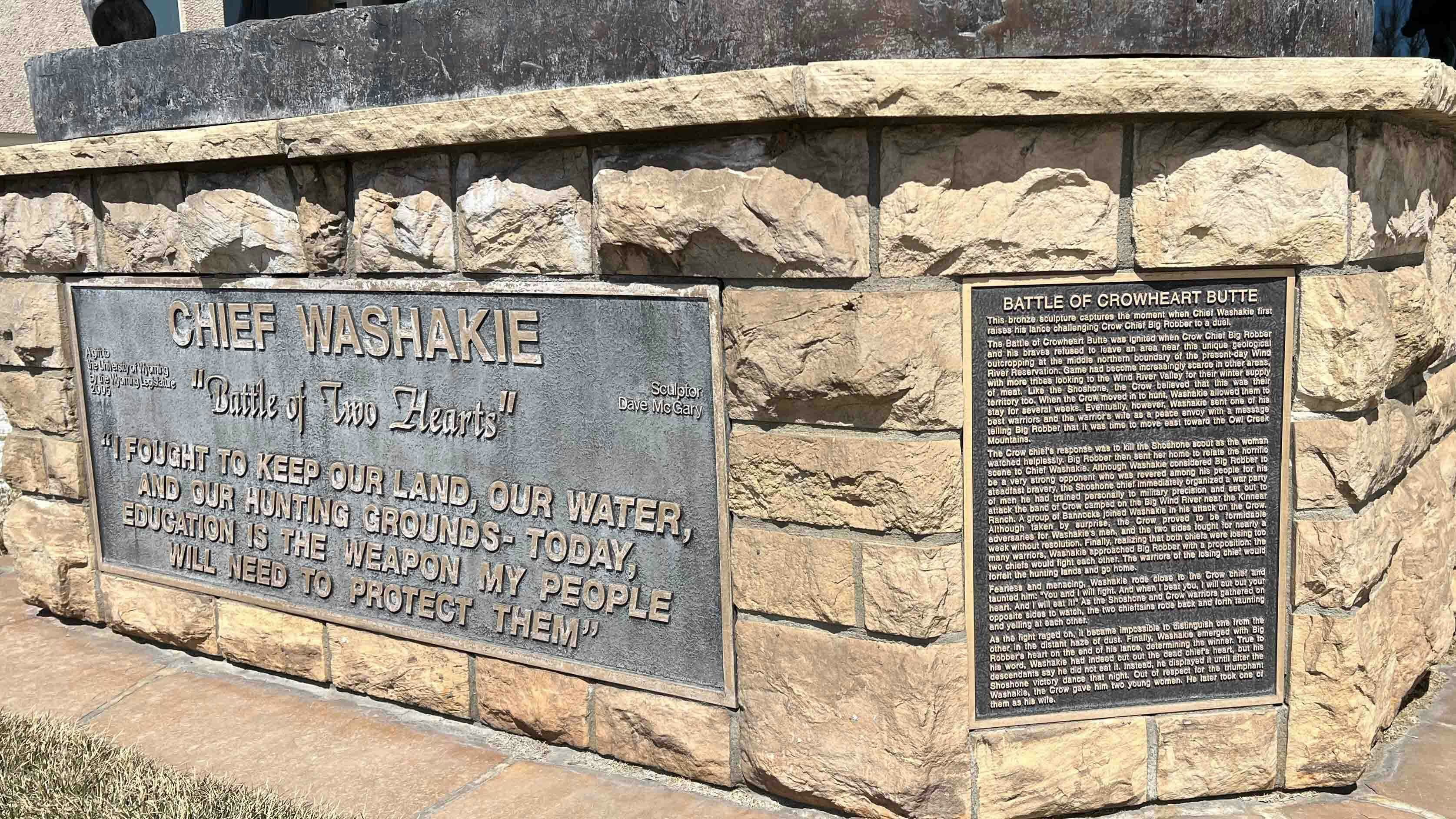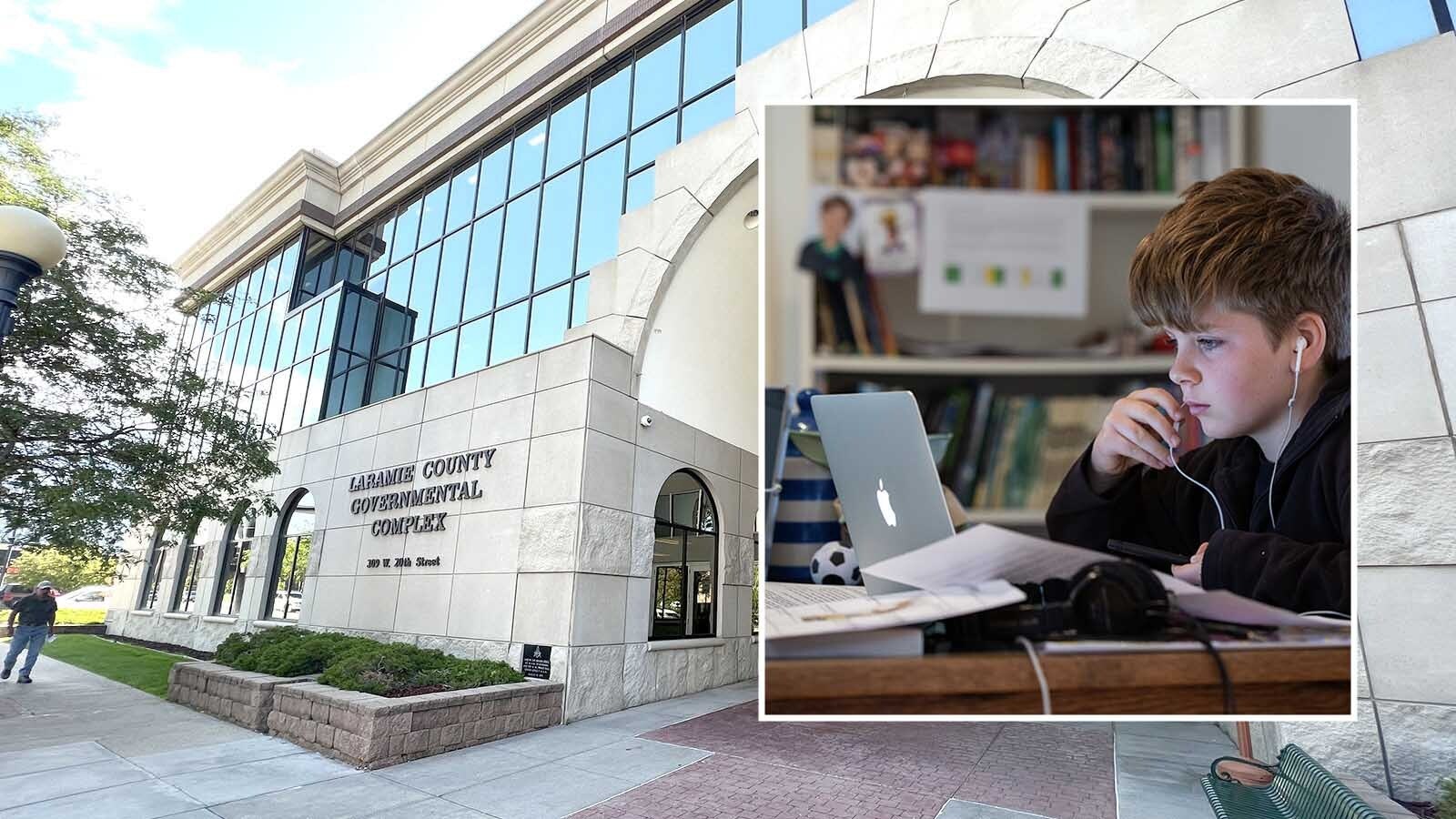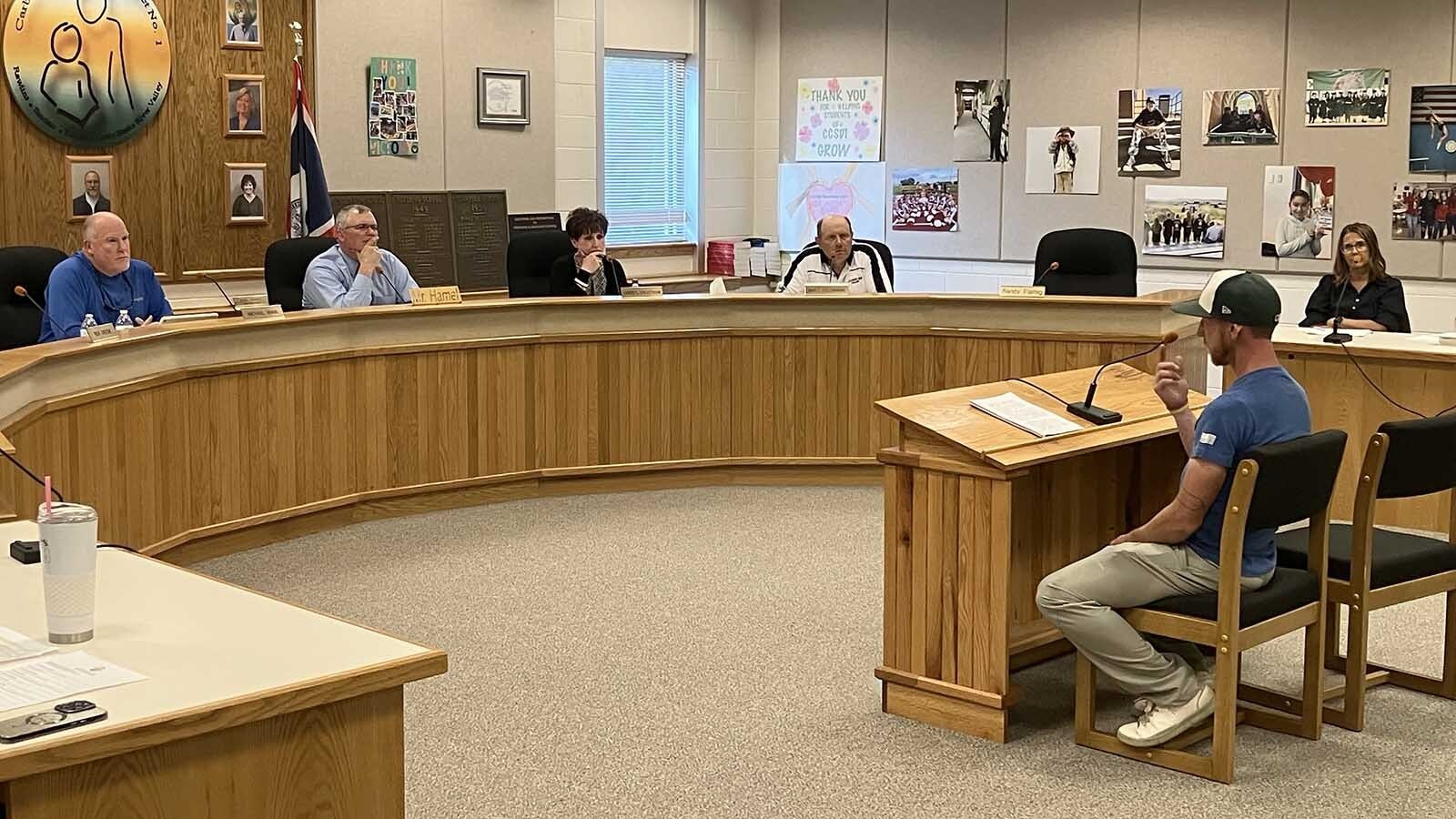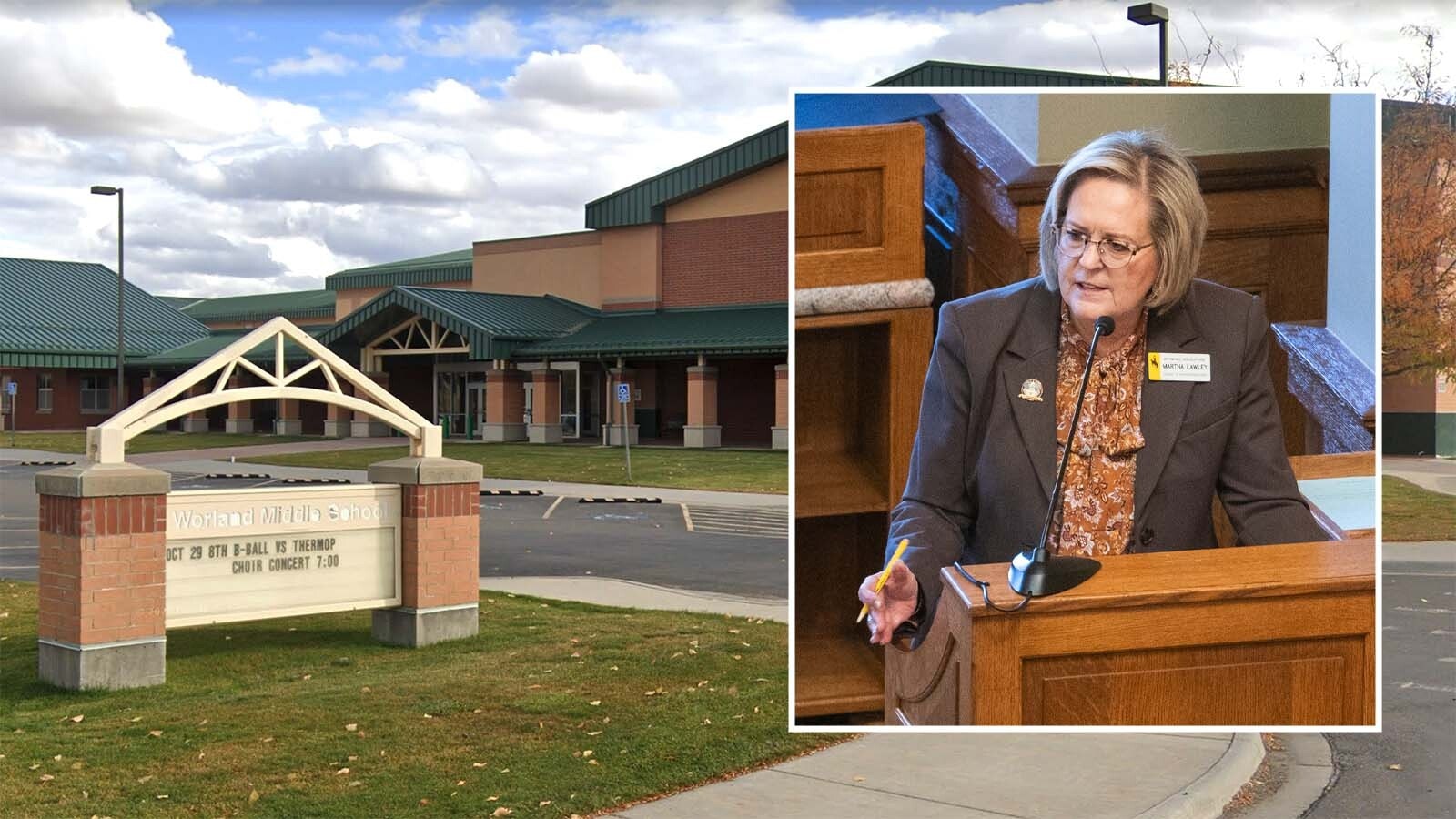One of the most legendary events in Wyoming's history has since 2005 been prominently commemorated in bronze near Grand Avenue on the University of Wyoming campus in Laramie.
A statue of Shoshone leader Chief Washakie, preparing to charge into battle on his favorite Appaloosa stallion with his lance held high, is one of the most striking landmarks on the south side of campus. It sits directly in front of the Washakie Dining Center, also named after the chief.
However, the future of the dining center, as well as the statue's location, is not set in stone.
Campus Redesign Looms
UW is in the process of replacing its main dining center and the dorms that surround it.
"There have been discussions about relocating the statue when the demolition of the dining center and adjacent buildings occurs, but that is quite a ways out," UW spokesman Chad Baldwin told Cowboy State Daily.
"The statue is certainly an important asset that the university will find a good spot for, but there have been no decisions yet on a new location," he added.
James Trosper, head of the Chief Washakie Foundation and a descendant of Washakie, said the possibility of the building named after his ancestor being demolished anytime soon troubles him.
Trosper, who is also UW President Ed Seidel's advisor on Native American affairs, said he likes the statue's highly-visible location.
"Every time I would go by there (the campus) there was always somebody reading the plaques on the base of the statue or taking pictures," he said. "Grand Avenue is a busy place, and the good thing is, there's a lot of visibility there. I hope that gets taken into consideration."
The Washakie Center is the largest dining hall on campus and serves students living in the surrounding dormitories. It also houses the main freight dock and storage areas for most of the universitys food supplies, as well as the UW Residence Life and Dining Services offices.
Construction has begun on a new dining hall a few blocks away -- on the west side of the stretch of 15th Street that runs through campus. It's expected to be finished by spring 2025, Baldwin said.
"There's no timetable for the demolition of the old buildings," he added.
Direct Line To Legendary Stories
The statue, by Wyoming sculptor Dave McGary, is called "The Battle of Two Hearts" and it commemorates the 1866 battle of Crowheart Butte. That was a duel to the death between Washakie and Crow Chief Big Robber, Trosper said. It was a fight that ended a conflict between the two tribes, and Washakie won, securing his peoples hunting rights in the Wind River Mountains.
After his victory, Washakie took a Crow woman as his fourth wife, and they had three children: George, Charlie and Annie.
"Our family comes from George Washakie," Trosper said.
George's wife, Josie, was one of Washakie's youngest daughters-in-law, so she frequently cared for the chief during his elderly years, Trosper said.
Washakie lived a long life. His birthdate was uncertain -- it was either 1804 or 1810, and he lived until 1900.
As she tended to the elderly chief, Josie would listen to the tales of his incredible life.
"He would tell her things, he would tell her stories," Trosper said. "He would say to her, You're a good listener. I want our family to know what the truth is. Some things have been written about me that aren't the truth."
What Josie learned was passed down to her granddaughter, Zedora Enis who is Trosper's mother and director of the Eastern Shoshone Cultural Center.
A Duel To End A War
The story behind the statue is etched in Wyoming history.
The Shoshone had lived and hunted in the Wind River Mountains and the surrounding lands for at least 3,000 years, and probably longer, Trosper said.
But as white settlers continued to push other tribes farther west, some of them started to encroach on Shoshone land, as did the whites themselves later on.
Washakie was a fierce warrior, but preferred not to fight, either with whites or the other Native Americans, Trosper said.
"He was really different from a lot of leaders. He did everything he could to try to keep the peace first. If he had to fight, he would," Trosper said.
As the Crow continued to push into Shoshone territory, tensions began to rise, Trosper said.
So, Washakie sent a Shoshone woman and her husband to Chief Big Robber's camp to negotiate. Sending a woman was an indication of peaceful intentions, Trosper said.
The Crows killed the man and sent the woman back with her dead husband as a message to Washakie.
A days-long battle broke out, and "both sides were losing a lot of men," Trosper said.
In a bold move to end the bloodshed, Washakie made a proposal to Big Robber to settle things by fighting one-on-one, to the death.
"He told the Crow chief, Why don't you and I meet? And we will fight, so that we don't continue to lose our men. Our warriors," Trosper said.
They agreed to meet at Crowheart Butte, in what is now rural Fremont County.
"It was a landmark both of them knew," Trosper said.
A Heart On A Lance
Washakie went into battle bearing a lance, a shield and a rattle -- all accurately depicted in the statue. He liked using the rattle to startle an enemy's horses in battle, Trosper said.
He was mounted on his favorite horse, an Appaloosa given to him by the famous Nez Perce leader Chief Joseph.
Trosper said it's uncertain whether Washakie had a name for the horse, but he prized it for its agility and power. The Chief would later tell Josie that he gave most of the credit for his victory in the duel to the horse.
Trosper said that was reflective of the chief's modesty.
"He would never say it, but it (the victory) was a result of his own courage and strength too," Trosper said.
And given that Washakie at the time was at least well into his 50s, and possibly even his 60s, makes it all the more impressive.
It's popular legend that the fight took place up on the butte, but Trosper said that's false.
Washakie told Josie, "We didn't fight up on the butte, that would have been crazy, we fought along the river at the base of the butte," he said.
To open the duel, the chiefs rode in opposite directions for a fair distance, then turned their mounts and charged each other, he said.
"The statue depicts the moment when Washakie had turned his horse and began to charge," Trosper said.
After his victory, Washakie rode back to the Shoshone camp with Big Robber's heart on the end of his lance.
Another false legend, that apparently made it into writing in some instances, is that Washakie ate Big Robber's heart.
Josie was told by Washakie that "I did cut it (Big Robber's heart) out, and I held it on a lance and went back to the camp with it. And they had a victory dance, but didn't eat it, Trosper said.
A Timeless Legacy
The statue of Washakie at UW is just one of McGary's works dedicated to the chief, Baldwin said. McGary also created the statues of Chief Washakie now in the Statuary Hall in the U.S. Capitol and in the annex area of the Wyoming State Capitol.
Most recently, there was a dedication ceremony for a bronze sculpture in Cheyenne, depicting Chief Washakie holding a peace pipe.
Trosper said that regardless of what changes are made to the UW campus, his ancestors' legacy deserves respect.
"This statue is of great historical significance," he said.

